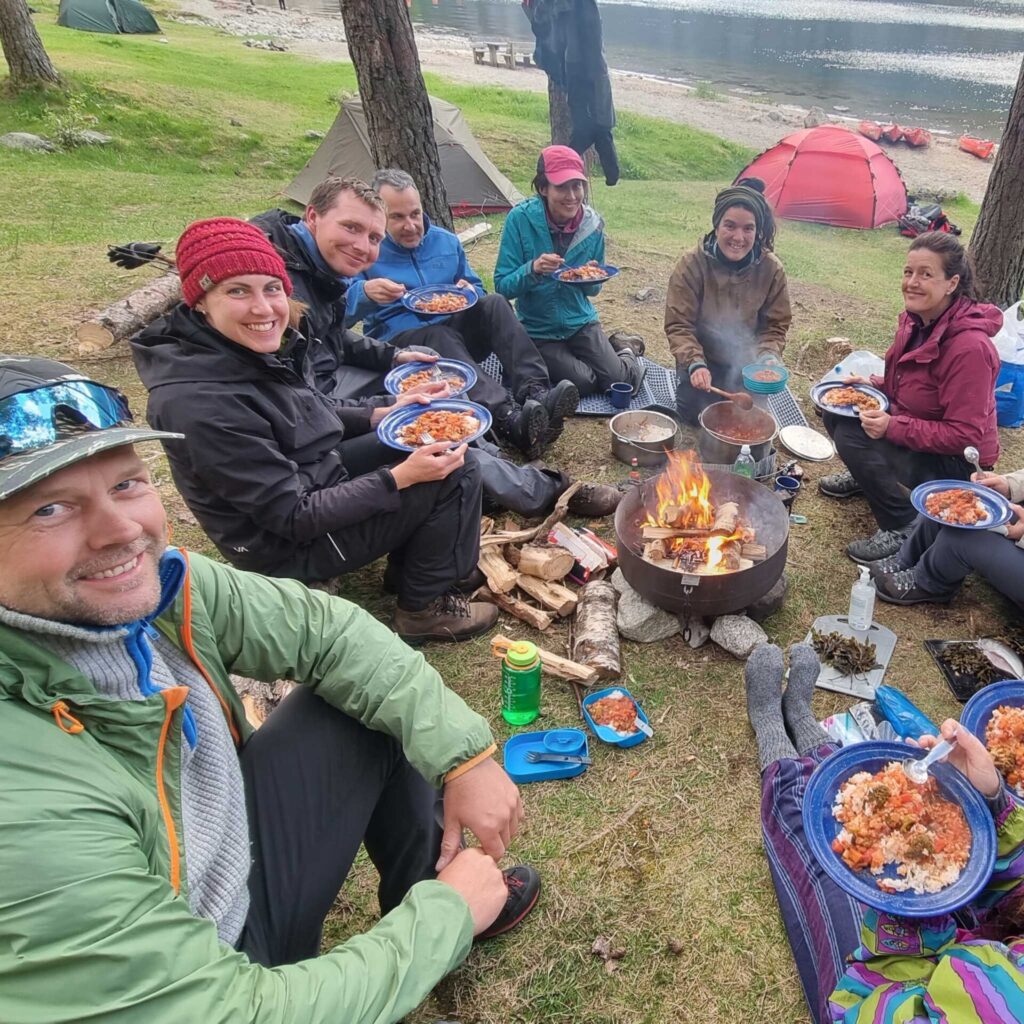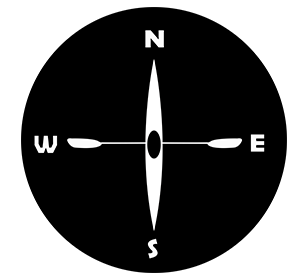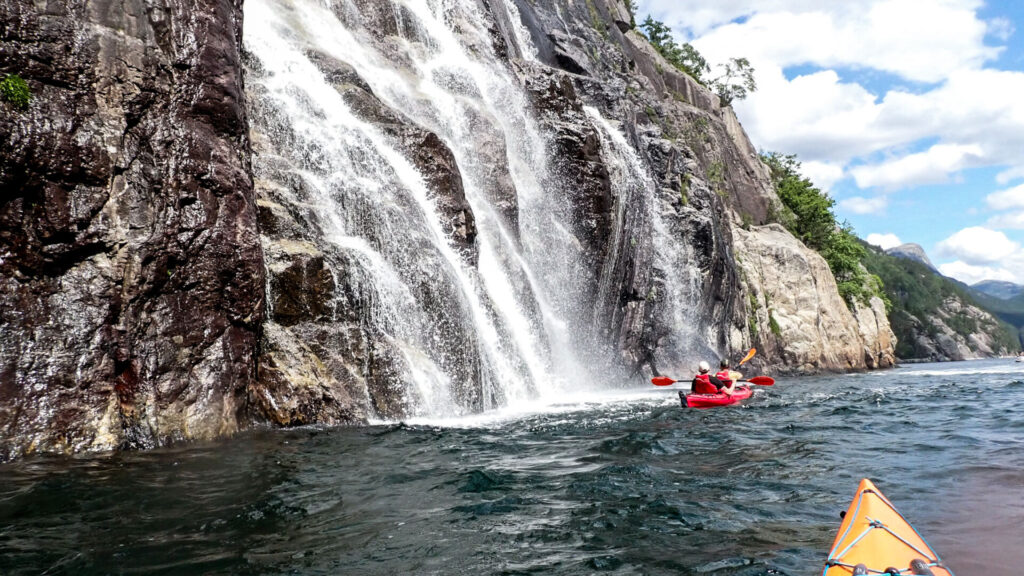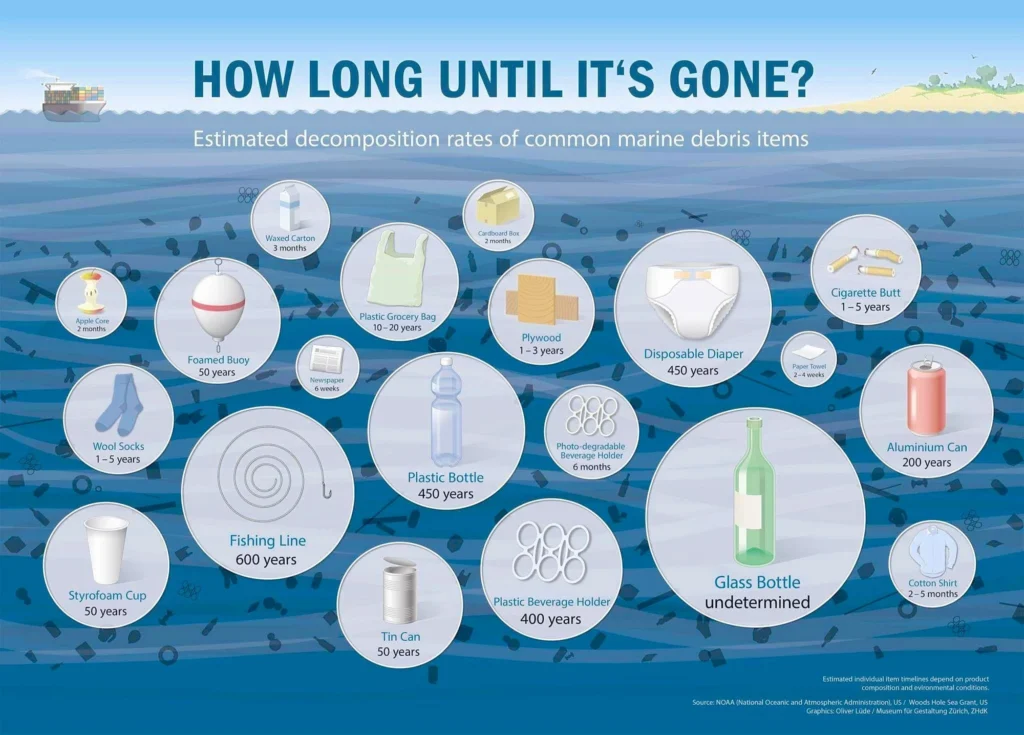What is responsible kayaking?
Sea kayaking is a great experience, offering a silent, low-impact connection with nature that few other activities can match. It’s an opportunity to explore nature areas which are impossible to see from the road or the shore.
But with this experience comes also responsibility, to treat nature and wildlife carefully. We at Nordic Paddling, are intertwined with the philosophy of leave no trace and the spirit of Norway’s Allemannsretten (Everyman’s Right).
In this guide, you can discover the ways to be a truly responsible paddler, ensuring the fjords, coastlines, and communities we pass through remain pristine for generations to come.
Wildlife around you
One of the greatest joys of kayaking in Norway is the opportunity to observe local wildlife. It can happen that you will see seals and porpoises breaking the surface of the fjord, or an eagle in the sky. Or in Northern Norway, even Orcas.
While it can be tempting to try and get as close as possible, to get the best picture, it is critical that you maintain a safe and respectful distance. That is important not only for your own safety and that of your group but for the welfare of the animals. Remember, you are observing them «in their home», and respect is key.
Avoid disturbing behaviour: Failure to give animals the space they need may result in a change in natural behaviour that could be detrimental to the species (e.g., separating a mother seal from her pup, or stressing nesting birds).
Give marine wildlife space: If you are lucky enough to be paddling near whales in Northern Norway, never box them in. Always allow them a clear path to move freely and never chase or paddle directly towards them.
Bird nesting sites: Be aware of shoreline areas and small islands designated as bird sanctuaries or known nesting sites. Avoid landing your kayak or making unnecessary noise near these areas. Don’t put camp up in wildlife/nature reservoirs.
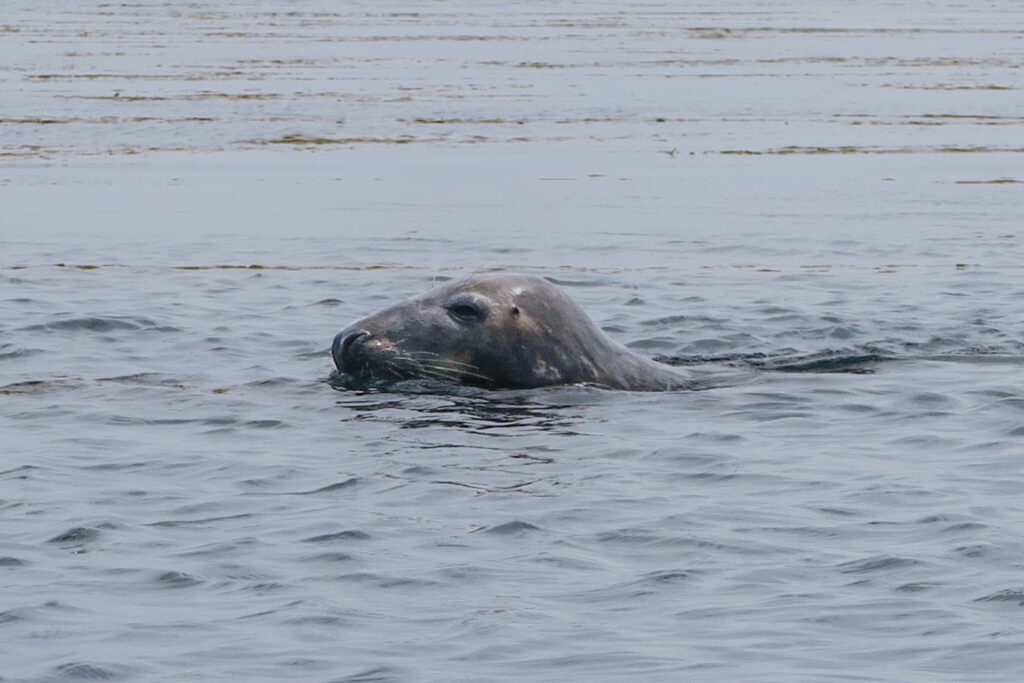
Fishing and Foraging
Access to Norway’s waters for fishing is part of the tradition and very popular in tourists as well. But it comes with strict rules:
- Saltwater Fishing: You have the right to fish in the sea (fjords and coast) with a rod and line for personal consumption without a fishing license. However, there are minimum size limits and rules on equipment.
(cod at least 44 cm (North) or 40 cm (South) and halibut at least 84 cm) As a tourist, you may not sell your catch and there are limits on how much fish you can bring out of the country. - Freshwater Fishing: Fishing in inland waters (lakes and rivers) is NOT covered by Allemannsretten. You must purchase a local fishing license (fiskekort) or secure permission from the landowner. Always check the local rules for the water you are using.
- Bio-Security for Paddlers/Anglers: To prevent the spread of invasive species and fish diseases (like Gyrodactylus salaris), you must clean and disinfect all fishing and paddling equipment (kayak, paddles, lines, waders) between different water systems. Look for local disinfection stations or use approved methods.
- Foraging: Generally, you may pick wild berries, mushrooms, and common wildflowers for personal use. But not on private property!
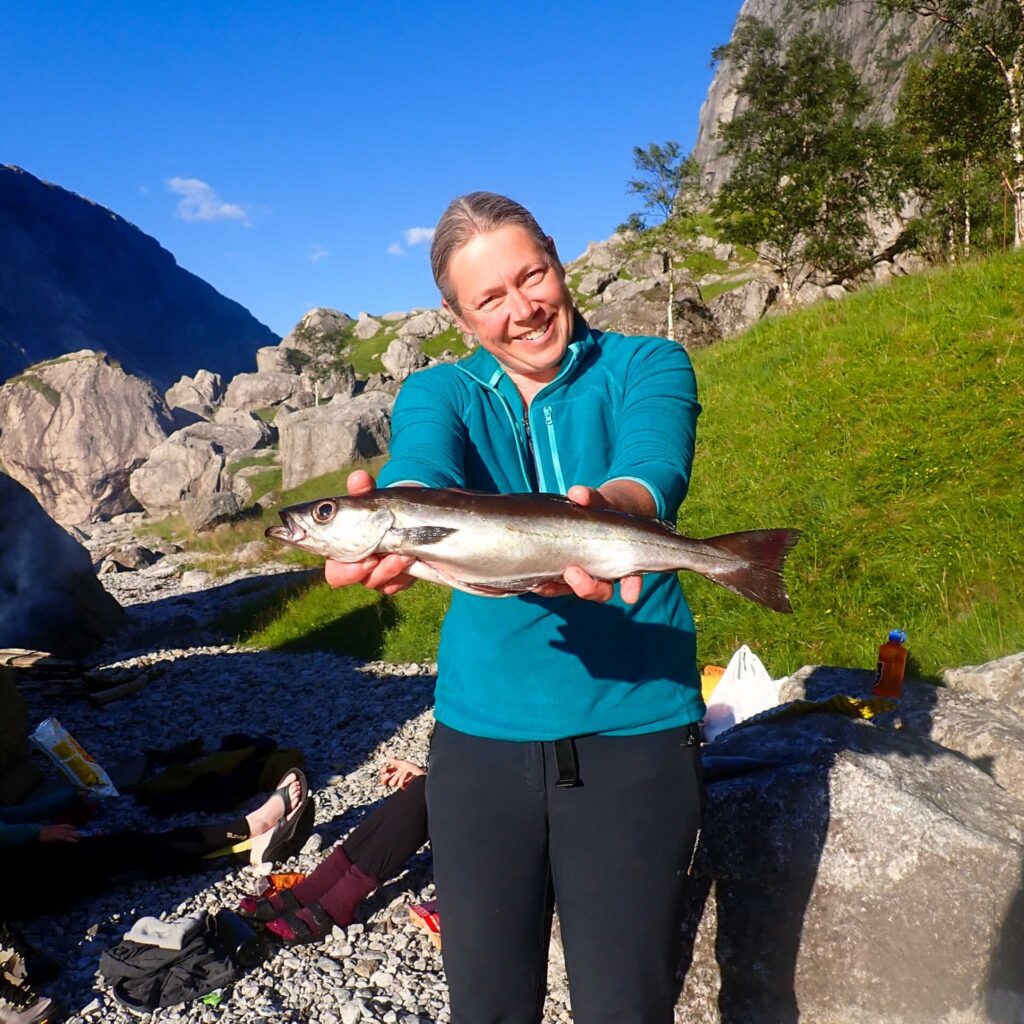
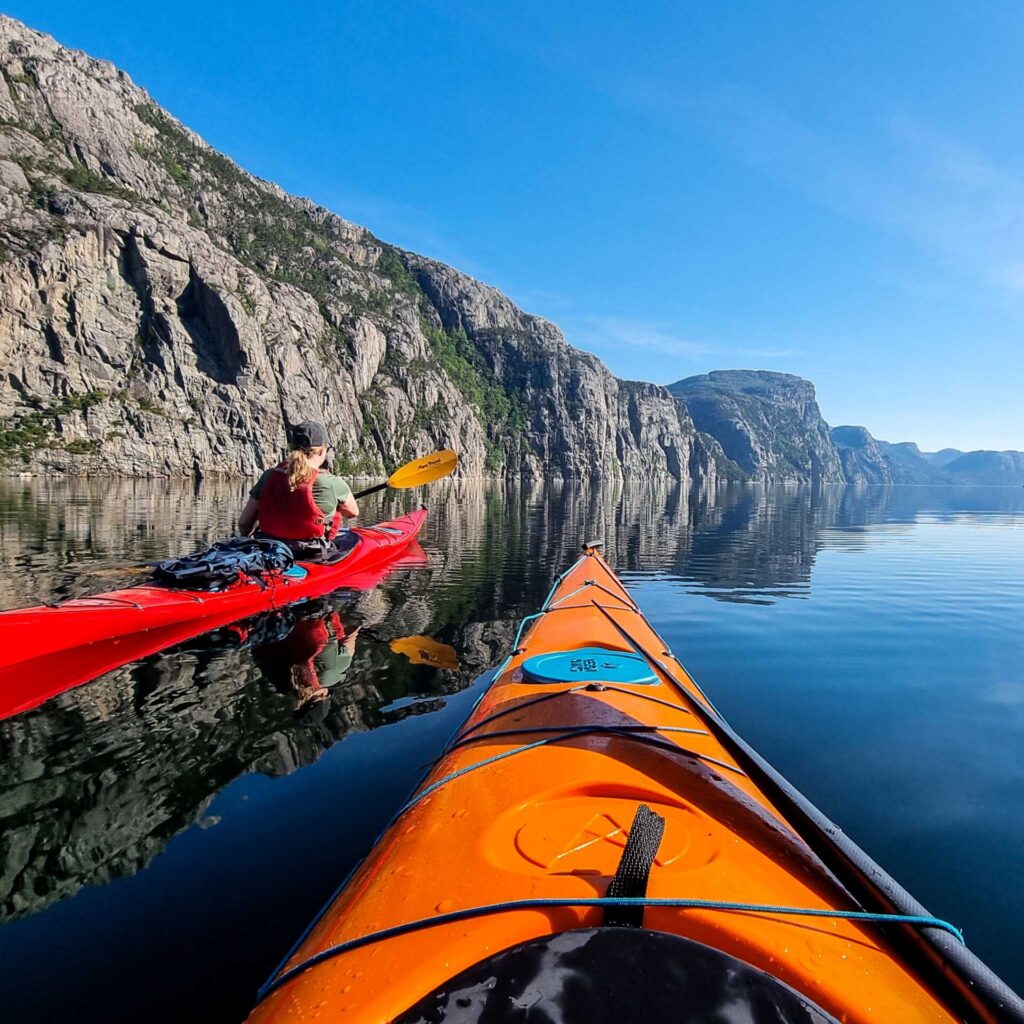
Kayaking and Water Safety
When paddling, the environment’s primary concern is the cold in case of capsizing, and your primary responsibility is preparedness.
Water Safety: The water in Norwegian fjords and lakes is cold year-round (often 4 to 12 Celsius, in summer higher 15-19 Celsius). Always wear an approved life vest and dress for the water temperature, not the air temperature. A dry suit is mandatory for many trips, especially outside of peak summer. Know your self-rescue and buddy rescue techniques.
Check the Fjord Forecast: Fjord weather can change quickly. Strong winds or gusts can develop fast. Always check the wind and weather forecasts before launching. If in doubt, stay ashore or paddle close to land. Never paddle in thunder!
Avoid Paddling Solo: For safety reasons, it is highly recommended that you never paddle a sea kayak alone in the fjords. Join a guided tour or paddle with an experienced friend.
Protect the Shoreline: When landing your kayak, avoid trampling fragile beach or shoreline plants. Be mindful of nesting birds, seals, and other wildlife, maintaining a distance of at least 50-100 meters if possible.
Minimize Waste and limiting Plastic
The beauty of the fjords and seas is easily damaged by pollution, and our oceans are hit particularly hard by plastic waste. We must be proactive in reducing our footprint before, during, and after our trips.
Ditch Single-Use Plastic: Always travel with a reusable water bottle. In Norway, tap water is clean and safe to drink and you can refill almost anywhere. If you are in doubt about a source, use water purification tablets or a reusable bottle with an inbuilt filtration system.
Pack It In, Pack It Out: The idea of limiting single-use plastics extends to an overall minimization of waste in general. Practice Leave No Trace principles by taking all garbage with you—this includes food scraps, fruit peels, and even tissues, which take a long time to decompose in cold environments.
Clean Up as You Go: If you see trash left by others on a beach or campsite, please take a moment to pick it up and carry it out. Help us ensure the natural environment can remain just that—natural.
Products and Gear
Even when out in the wild on a multi-day trip, maintaining hygiene is important. However, the products we use can have a negative impact on delicate waterways and marine life.
Choose Earth-Friendly Products: Look for biodegradable alternatives for soaps, shampoos, and detergents that are free from harsh chemicals which would otherwise pollute the water.
Distance from Water: Avoid washing your hands, body, or dishes directly in fresh or natural water sources. It is best to move at least 60 meters (70 large steps) away from the water’s edge. This ensures your biodegradable products are filtered through the soil, rather than running directly into the stream, lake, or fjord.
Hand Sanitizer: Use hand sanitizer as a good way of reducing the spread of bacteria when hand washing with soap and water is not possible or appropriate.
- Look for Sustainable Manufacturing: If buying new cloth or gear, look for paddles, clothing, and accessories made from recycled materials and preferably produced in factories powered by renewable resources. While this gear can sometimes be pricier, it considerably reduces your carbon footprint.
- For cooking: Use reusable dishes an refillable bottles. Take all waste and left overs with you.
